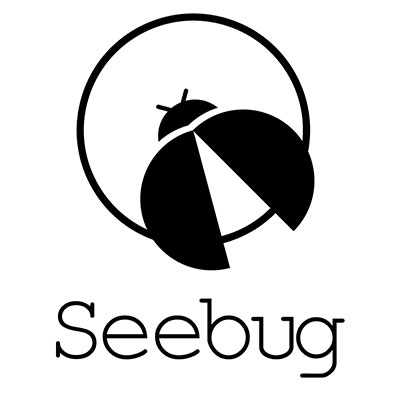# ICS Advisory (ICSA-18-275-01)
## Delta Electronics ISPSoft
Original release date: October 02, 2018
[Print Document](javascript:window.print\(\);)
[Tweet](https://twitter.com/share?url=https%3A%2F%2Fus-
cert.cisa.gov%2Fics%2Fadvisories%2FICSA-18-275-01)
[Like Me](https://www.facebook.com/sharer.php?u=https%3A%2F%2Fus-
cert.cisa.gov%2Fics%2Fadvisories%2FICSA-18-275-01)
[Share](http://www.addthis.com/bookmark.php?url=https%3A%2F%2Fus-
cert.cisa.gov%2Fics%2Fadvisories%2FICSA-18-275-01)
### Legal Notice
All information products included in [https://us-cert.gov/ics](/ics) are
provided "as is" for informational purposes only. The Department of Homeland
Security (DHS) does not provide any warranties of any kind regarding any
information contained within. DHS does not endorse any commercial product or
service, referenced in this product or otherwise. Further dissemination of
this product is governed by the Traffic Light Protocol (TLP) marking in the
header. For more information about TLP, see [https://www.us-
cert.gov/tlp/](/tlp/).
* * *
## 1\. EXECUTIVE SUMMARY
* **CVSS v3 5.3**
* **ATTENTION:** Exploitable remotely/Low skill level to exploit
* **Vendor:** Delta Electronics
* **Equipment:** ISPSoft
* **Vulnerability:** Stack-based Buffer Overflow
## 2\. RISK EVALUATION
Successful exploitation of this vulnerability could allow an attacker to
execute code under the context of the application.
## 3\. TECHNICAL DETAILS
### 3.1 AFFECTED PRODUCTS
The following versions of ISPSoft, a PLC program development tool, are
affected:
* ISPSoft Version 3.0.5 and prior.
### 3.2 VULNERABILITY OVERVIEW
### 3.2.1 [STACK-BASED BUFFER OVERFLOW
CWE-121](https://cwe.mitre.org/data/definitions/121.html)
By opening a crafted file, an attack can cause the application to read past
the boundary allocated to a stack object, which could allow execution of code
under the context of the application.
[CVE-2018-14800](http://web.nvd.nist.gov/view/vuln/detail?vulnId=CVE-2018-14800)
has been assigned to this vulnerability. A CVSS v3 base score of 5.3 has been
calculated; the CVSS vector string is
[(AV:L/AC:L/PR:N/UI:R/S:U/C:L/I:L/A:L)](https://www.first.org/cvss/calculator/3.0#CVSS:3.0/AV:L/AC:L/PR:N/UI:R/S:U/C:L/I:L/A:L).
### 3.3 BACKGROUND
* **CRITICAL INFRASTRUCTURE SECTOR:** Critical Manufacturing
* **COUNTRIES/AREAS DEPLOYED:** Worldwide
* **COMPANY HEADQUARTERS LOCATION:** Taiwan
### 3.4 RESEARCHER
Ariele Caltabiano (kimiya) working with Trend Micro's Zero Day Initiative
reported this vulnerability to NCCIC.
## 4\. MITIGATIONS
Delta Electronics recommends affected users update to ISPSoft v3.0.6 or newer.
The update can be downloaded from the following location:
[http://www.deltaww.com/services/DownloadCenter2.aspx?secID=8&pid=2&tid=0&CID=06&itemID=060301&typeID=1&downloadID=DVP-
SE%20Series,&title=DVP-SE%20Series&dataType=8;&check=1&hl=en-
US](https://na01.safelinks.protection.outlook.com/?url=http%3A%2F%2Fwww.deltaww.com%2Fservices%2FDownloadCenter2.aspx%3FsecID%3D8%26pid%3D2%26tid%3D0%26CID%3D06%26itemID%3D060301%26typeID%3D1%26downloadID%3DDVP-
SE%2520Series%2C%26title%3DDVP-
SE%2520Series%26dataType%3D8%3B%26check%3D1%26hl%3Den-
US&data=02%7C01%7Cscott.southwick%40inl.gov%7C6c16ab5a5b394a0dfb8708d622dd0b81%7C4cf464b7869a42368da2a98566485554%7C0%7C0%7C636734730134742510&sdata=TZmoo3%2FosAb1nLszsAMoEbgQwZK2KjBL1UhzQdFoxCU%3D&reserved=0)
NCCIC recommends users take defensive measures to minimize the risk of
exploitation of this vulnerability. Specifically, users should:
* Minimize network exposure for all control system devices and/or systems, and ensure that they are [not accessible from the Internet](/ics/alerts/ICS-ALERT-10-301-01).
* Locate control system networks and remote devices behind firewalls, and isolate them from the business network.
* When remote access is required, use secure methods, such as Virtual Private Networks (VPNs), recognizing that VPNs may have vulnerabilities and should be updated to the most current version available. Also recognize that VPN is only as secure as the connected devices.
NCCIC reminds organizations to perform proper impact analysis and risk
assessment prior to deploying defensive measures.
NCCIC also provides a section for [control systems security recommended
practices](/ics/content/recommended-practices) on the ICS-CERT web page.
Several recommended practices are available for reading and download,
including [Improving Industrial Control Systems Cybersecurity with Defense-in-
Depth Strategies](/sites/default/files/recommended_practices/NCCIC_ICS-
CERT_Defense_in_Depth_2016_S508C.pdf).
Additional mitigation guidance and recommended practices are publicly
available on the [ICS-CERT website](/ics/) in the Technical Information Paper,
[ICS-TIP-12-146-01B--Targeted Cyber Intrusion Detection and Mitigation
Strategies](/ics/tips/ICS-TIP-12-146-01B).
Organizations observing any suspected malicious activity should follow their
established internal procedures and report their findings to NCCIC for
tracking and correlation against other incidents.
No known public exploits specifically target this vulnerability.


暂无评论